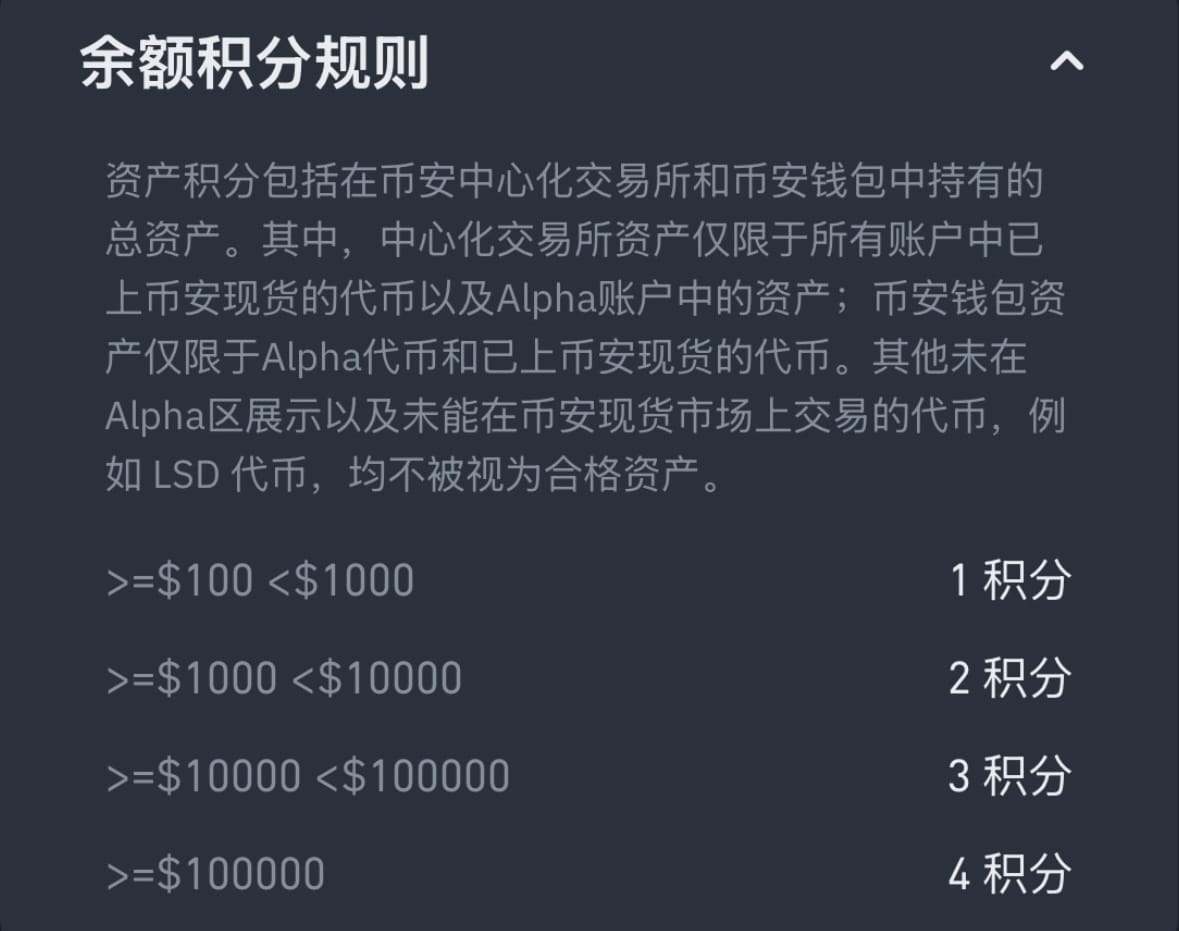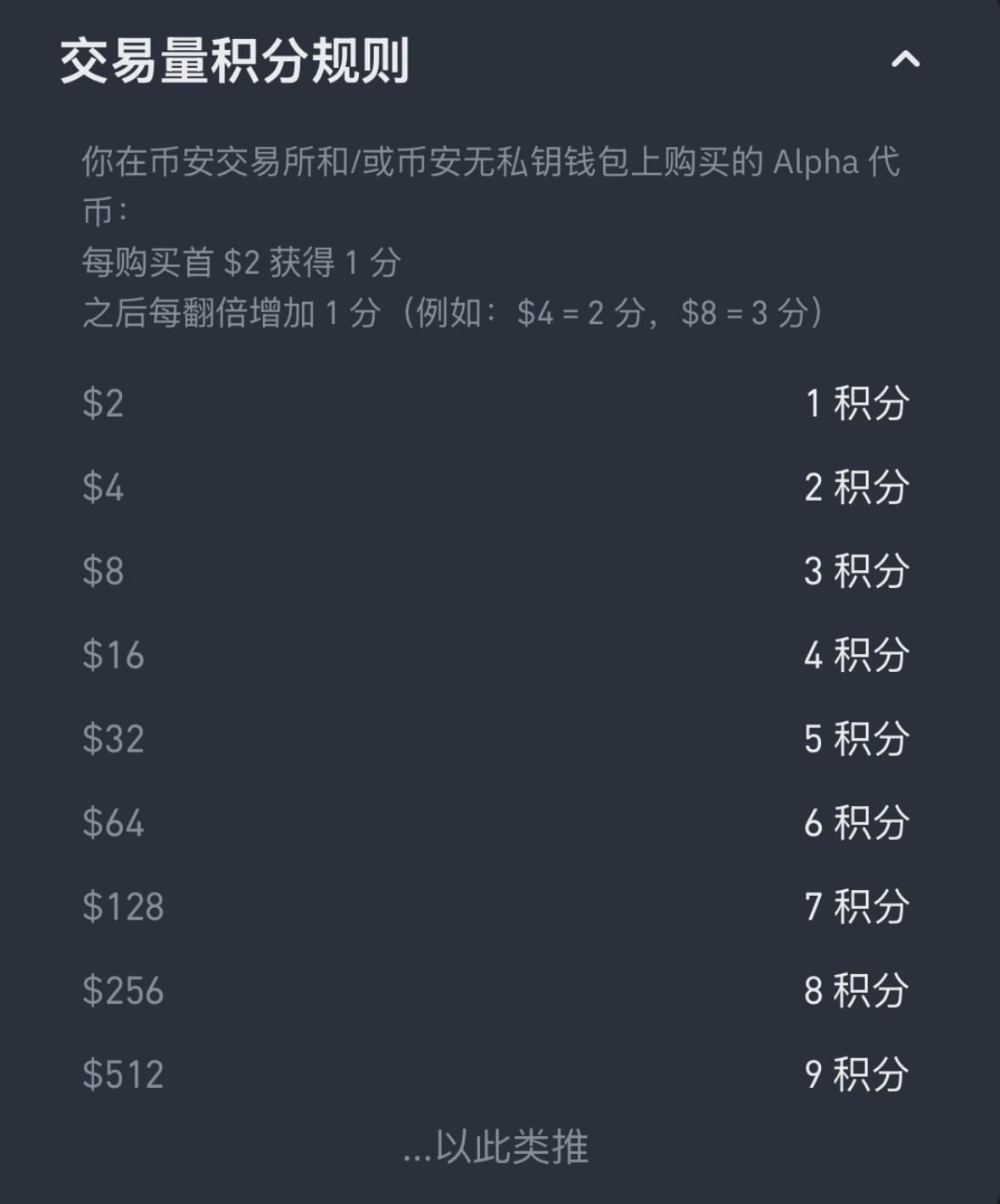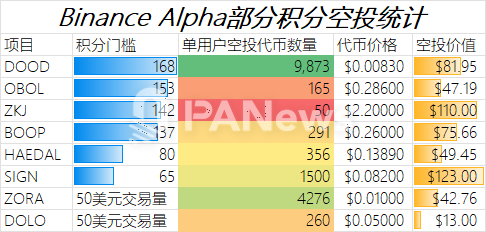Author: Frank, PANews
Recently, Binance's Web3 wallet has created a huge wave in the Web3 wallet market with its innovative "Alpha" gameplay, rapidly increasing its market share to occupy 90% of the territory, which is quite remarkable. Behind this phenomenon are its sophisticated points airdrop mechanism, strategic adjustments by competitors, and the resulting chain reaction and significant recovery of the BNB Chain ecosystem.
How does Binance Alpha cleverly exploit market gaps and user psychology to achieve an expansion akin to "whale swallowing"? Beneath the surface of the "gold rush," what are the "involution" pressures and real returns faced by users? Is this merely a fleeting traffic frenzy, or a model innovation capable of leading industry transformation?
Competitor Gaps and Points Gameplay Swallowing the Wallet Market
Since its launch, Binance's Web3 wallet has seen explosive growth in market share. According to Dune data, by May 12, 2025, Binance's Web3 wallet accounted for as much as 95.7% of the total transaction volume of all tracked Web3 wallets, ranking first. This is a significant leap from 54.1% in March 2025. On May 10, 2025, the daily peak transaction volume of Binance wallet exceeded $930 million, while on April 22, this figure was only $76 million.

The activity level of the BNB Chain ecosystem has also been boosted by Alpha. The TVL of BNB Chain has significantly increased, with a growth of over $6 billion from early 2024 to May 2025. This is closely related to the rise of Binance Alpha; according to official data, half of the top 20 Alpha tokens by trading volume are native BSC projects. Among the top 10 new active users of Alpha tokens, 90% are BSC tokens, with six projects having new user shares exceeding 20%. On-chain BSC data has also seen significant growth: approximately 4.3 million new users in the past week, with daily new addresses exceeding 1 million for two consecutive days, and active addresses surpassing 2 million. The total number of independent BSC addresses has reached 552 million. From this data, it can be seen that Binance Alpha is becoming an important engine for the activity and capital inflow of the BNB Chain.
It is noteworthy that the sharp increase in Binance's Web3 wallet market share coincides closely with the timing of competitor OKX's suspension of its DEX aggregator service. On March 17 of this year, OKX announced the suspension of DEX product aggregator trading services, after which OKX wallet's market share plummeted from about 50% to 3.6%. Almost simultaneously, on March 18, Binance announced the launch of the Binance Alpha 2.0 test version, integrating Alpha trading directly into the Binance exchange.
The data also reflects a significant change; from March 10 to March 17, Binance wallet's trading volume market share was only 8.3%, but by March 24, it had grown to 50.2%, becoming the wallet application with the highest market share.
On April 17, Binance Alpha announced the upcoming launch of the GM token and the initiation of an airdrop plan. The search index for Binance Alpha began to rise rapidly, and its trading volume also saw significant changes. From April 17 to April 24, the trading volume reached $184 million, more than tripling from the previous week's $57.94 million. With the increasing popularity of the points system on social media, the trading volume for the week ending May 5 reached $1.574 billion, a 27-fold increase compared to the week before the airdrop mechanism was launched. This also propelled the total on-chain wallet trading volume to a historic record of $1.876 billion.

The "Sweetness" and "Burden" of Alpha Users
This explosive growth fundamentally stems from Binance Alpha's points airdrop gameplay. The Binance Alpha points system is a complex mechanism designed by Binance to incentivize user participation, filter active users, and allocate airdrop or TGE qualifications. Points are primarily allocated based on users' trading volume, balances, and other data on Binance Alpha, with thresholds set for each airdrop event to determine which users can participate.
However, with the surge in user numbers, this points gameplay is becoming a new battleground of involution. The key assessment indicators of this points mechanism are twofold: asset balance and daily trading volume.

Asset balances are divided into four levels. Total asset value of $100 to $1,000: 1 point per day; total asset value of $1,000 to $10,000: 2 points per day; total asset value of $10,000 to $100,000: 3 points per day; total asset value of $100,000 and above: 4 points per day.

In terms of trading volume, purchasing tokens worth $2: 1 point; purchasing tokens worth $4: 2 points; purchasing tokens worth $8: 3 points; purchasing tokens worth $16: 4 points; purchasing tokens worth $32: 5 points, and for every doubling of the purchase volume, an additional point is awarded (for example, purchasing $64 earns 6 points, purchasing $128 earns 7 points, and so on). It is generally considered that trading $32 in a single day to earn 5 points is a relatively cost-effective choice.
Additionally, these points are calculated on a rolling basis of 15 days, meaning users cannot rest on their laurels; continuous point accumulation is necessary to maintain their level.
This points gameplay has several clear attractions for users. First, the rules are clear, allowing users to predict the number of points they can earn based on their strategies to chase the airdrop threshold. Second, under this points system, there is essentially no first-mover advantage; later users can also participate and achieve similar points levels as early participants.

However, as involution intensifies, the points thresholds are continuously rising. From the initial standards of $50 trading volume or $100 asset balance to the latest project DOOD requiring 168 points. According to this standard, a new user needs to maintain a daily points volume of over 11.2 points to participate in this airdrop. Based on calculations, users meeting the conditions need to hold over $1,000 and conduct over $1,024 in daily trading to accumulate enough points for the airdrop. Considering on-chain fees and slippage costs, the total cost may exceed $60. Compared to the final value of the airdrop at $81, this yields an approximate 35% return. However, one must also consider the opportunity cost of the $1,000 principal; relative to the total capital investment, the 15-day return rate is about 2%. This return rate may not be as high as a single token's price increase, but it is relatively more stable, leading many yield farming studios to choose to invest in bulk.
Traffic Frenzy or Paradigm Revolution?
In reality, is Binance Alpha truly a new type of airdrop bonanza?
The announcement of the DOOD airdrop activity revealed the qualifying user thresholds. A total of 30,271 accounts met the requirements, and based on an airdrop amount of about $81 per account, the overall scale of this airdrop activity is approximately $2.48 million. Other token airdrop activities did not disclose corresponding address data, so specific amounts cannot be determined, but the estimated scale should be similar. For a project airdrop, a scale of several million dollars does not seem high, especially compared to the hundreds of millions or even billions of dollars in airdrop scales like Hyperliqued and Movement, which may even exceed the airdrop volume of a single large holder.
However, from the perspective of promotional effects and the trading data brought to the ecosystem, the input-output ratio of Binance Alpha is undoubtedly impressive. Essentially, this is similar to the trading mining that was popular a few years ago. With Binance's evident effects, many exchanges are also launching similar gameplay.
On May 7, Bybit announced the launch of a WEB3 points program, allowing users to earn WEB3 points by completing tasks such as holding crypto assets, conducting exchange transactions, and inviting friends.
On May 5, OKX announced significant functional upgrades to the DEX aggregator built into its self-custody wallet, OKX Wallet. New features include on-chain market analysis, smart fund tracking, and Meme mode, among others. As of May 11, OKX Wallet's market share rebounded to 8.5%.
In the process of exchanges competing for the wallet market, some traditional wallet applications have become unfortunate "collateral damage." In June 2023, MetaMask's trading volume market share could still reach over 60%. By May 2025, however, it had dropped to only 2.9%, and Binance's Trust Wallet is facing a similar predicament.
Overall, Binance Alpha has ignited a new wave of yield farming frenzy through its points system, similar to early exchanges' liquidity mining, stimulating trading activity through potential incentives. On one hand, it is an effective tool for Binance wallet, BSC, and other ecosystem products to gain market share and enhance user activity, successfully attracting a large number of users and capital. It has even, to some extent, encroached on competitors' market share. There is a clear positive correlation between the recovery of the BNB Chain and the promotion of Alpha, forming an "Alpha-BNB Chain flywheel effect."
On the other hand, for users, the 15-day rolling points, points burning mechanism, and continuously increasing airdrop thresholds force users into a state of "Alpha treadmill" with sustained high-intensity trading, making their real net returns often difficult to measure, and facing many hidden costs such as slippage and gas fees. For many ordinary users, the "gold rush" may gradually evolve into a "sweatshop" model, causing involution effects that may spread from users to exchanges. If the input-output ratio of such airdrops falls below the profit line, then today's bustling scene could quickly cool down in a short time.
However, for the industry, the mechanism design of Binance Alpha indeed has many aspects worth learning from, especially for projects with expected airdrops. Binance Alpha can be considered a classic case of achieving great results with minimal investment.
免责声明:本文章仅代表作者个人观点,不代表本平台的立场和观点。本文章仅供信息分享,不构成对任何人的任何投资建议。用户与作者之间的任何争议,与本平台无关。如网页中刊载的文章或图片涉及侵权,请提供相关的权利证明和身份证明发送邮件到support@aicoin.com,本平台相关工作人员将会进行核查。




